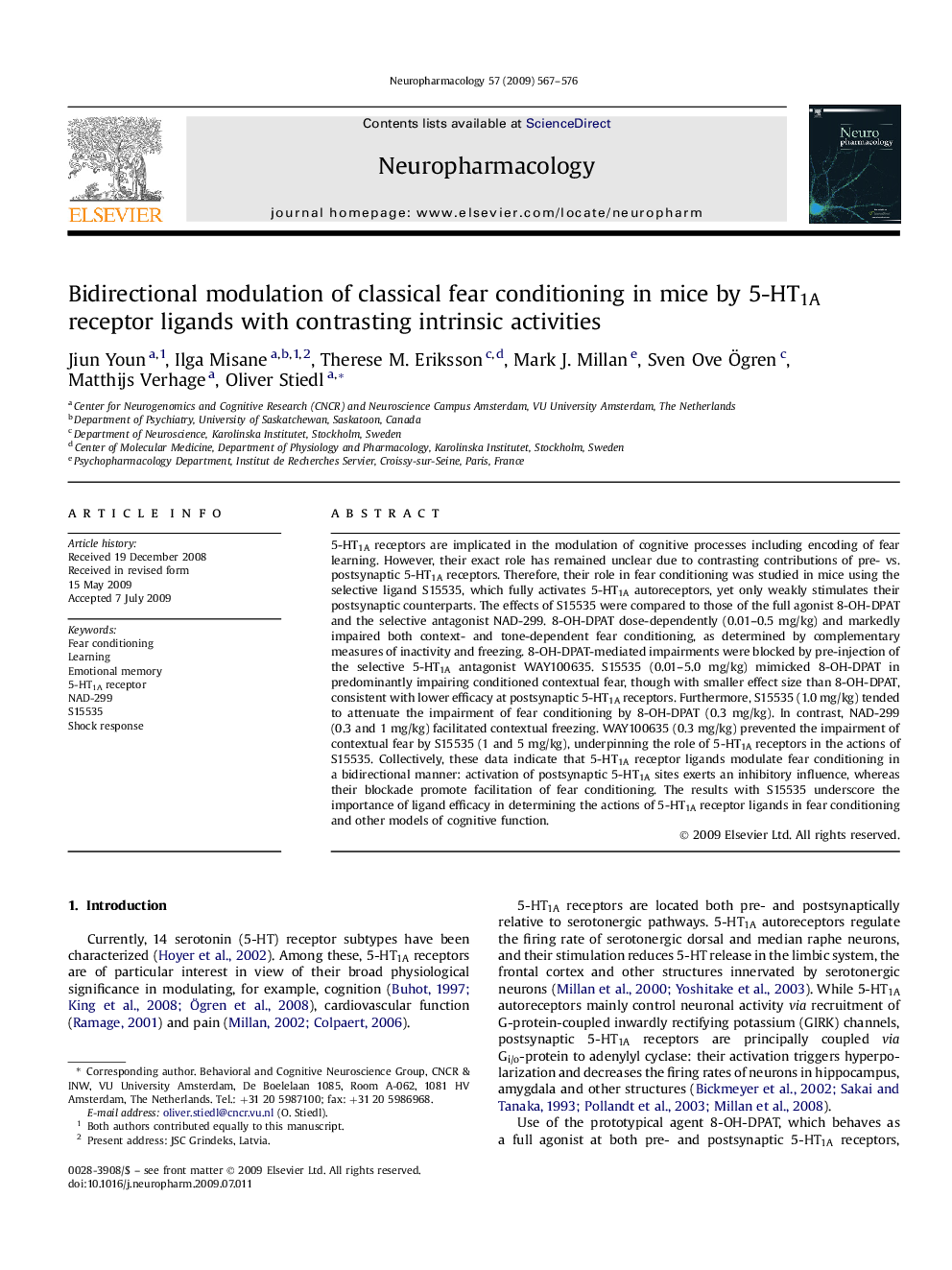| Article ID | Journal | Published Year | Pages | File Type |
|---|---|---|---|---|
| 2494425 | Neuropharmacology | 2009 | 10 Pages |
5-HT1A receptors are implicated in the modulation of cognitive processes including encoding of fear learning. However, their exact role has remained unclear due to contrasting contributions of pre- vs. postsynaptic 5-HT1A receptors. Therefore, their role in fear conditioning was studied in mice using the selective ligand S15535, which fully activates 5-HT1A autoreceptors, yet only weakly stimulates their postsynaptic counterparts. The effects of S15535 were compared to those of the full agonist 8-OH-DPAT and the selective antagonist NAD-299. 8-OH-DPAT dose-dependently (0.01–0.5 mg/kg) and markedly impaired both context- and tone-dependent fear conditioning, as determined by complementary measures of inactivity and freezing. 8-OH-DPAT-mediated impairments were blocked by pre-injection of the selective 5-HT1A antagonist WAY100635. S15535 (0.01–5.0 mg/kg) mimicked 8-OH-DPAT in predominantly impairing conditioned contextual fear, though with smaller effect size than 8-OH-DPAT, consistent with lower efficacy at postsynaptic 5-HT1A receptors. Furthermore, S15535 (1.0 mg/kg) tended to attenuate the impairment of fear conditioning by 8-OH-DPAT (0.3 mg/kg). In contrast, NAD-299 (0.3 and 1 mg/kg) facilitated contextual freezing. WAY100635 (0.3 mg/kg) prevented the impairment of contextual fear by S15535 (1 and 5 mg/kg), underpinning the role of 5-HT1A receptors in the actions of S15535. Collectively, these data indicate that 5-HT1A receptor ligands modulate fear conditioning in a bidirectional manner: activation of postsynaptic 5-HT1A sites exerts an inhibitory influence, whereas their blockade promote facilitation of fear conditioning. The results with S15535 underscore the importance of ligand efficacy in determining the actions of 5-HT1A receptor ligands in fear conditioning and other models of cognitive function.
